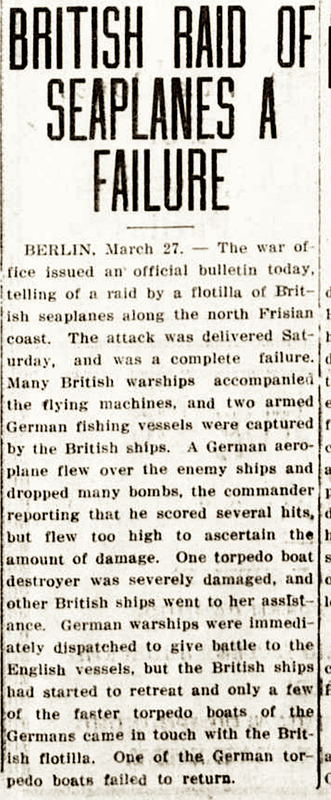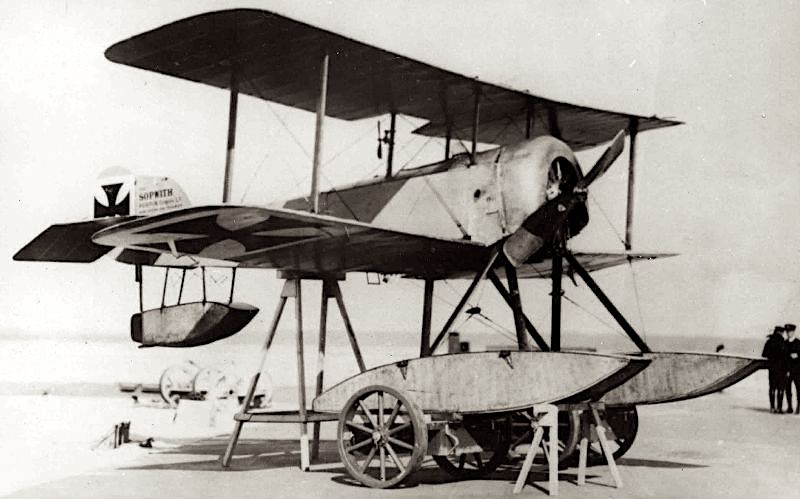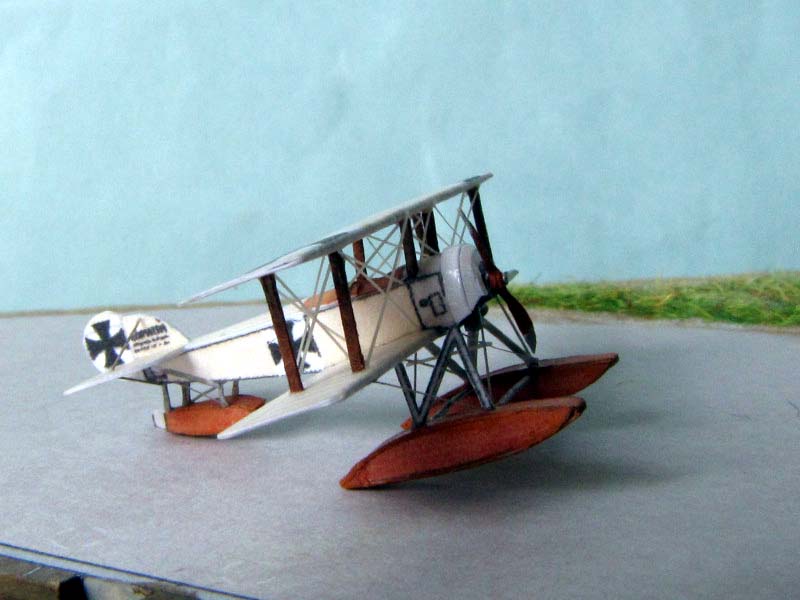Floatplane Flotilla FlopsIs that Sopwith wearing an Iron Cross? An official bulletin from Berlin, shared in an Alaskan newspaper, alerts us of a botched British raid along Germany's coast. Here's a well-written recap of what sounds to be the same raid. Thrilling stuff:
"
25 March 1916 The seaplane carrier HMS Vindex sailed, with Cdre Tyrwhitt?s Harwich Force, to attack Zeppelin sheds at Schleswig Holstein. At 0430 the following morning, five Short 184 seaplanes were launched in squalls of snow and sleet. Two returned a couple of hours later, the first pilot reported he had not found the sheds so had bombed and set light to a factory; the second had flown further inland and found the sheds at Hoyer, but his bomb rack were frozen and was unable to drop anything. Three of the seaplanes failed to return and the crews posted as missing.
Whilst they were returning to Vindex, Flt.Sub Lt George Reid and CPO Mechanic 3rd Class Richard Mullins spotted Sopwith Baby seaplane No.8153, flown by Flt Sub Lt John Hay, stranded a short distance from the coast and they landed alongside, where Mullins tried to help Hay get its engine started. When German troops arrived on the shoreline, Reid suggested they ought to depart. So, with Hay strapped to a strut between the wings of the Short 184, he took off and they headed back towards Vindex.
Flying into another snowstorm they landed and continued taxiing on the water. They were spotted by two German seaplanes and shortly afterwards a motor boat arrived and the three British airmen were taken prisoner and spent the rest of the war in PoW camps.
Reid was amongst the first recipients of the new Distinguished Flying Cross (DFC) for ?great courage, ability and resource under the most trying circumstances, which included prolonged flying in a snowstorm and immersion for over three hours in the sea.? Richard Mullins received a Distinguished Flying Medal for ?displaying marked courage, initiative and resource in this hazardous undertaking? (Citation listed in London Gazette 7 Feb 1919)
Flt Sub Lt Cyril Knight and Mid Stanley Hoblyn RNR, who were flying in another aircraft were not heard of again." (via facebook.com/FAAHistory)
If you're curious as to the fate of Lt. May's beached Sopwity Baby, the Germans paraded it as a war trophy and put it into service against the British (image below).
(from the Cordova Daily Times, 27 March 1916):


(image via facebook.com/FAAHistory)
Here's a fabulous micro (1/250th scale!) paper model of this captured Sopwith in German livery by Michael Kaintoch(more images here:
http://www.modelshipgallery.com/gallery/misc/aircraft/baby-250-mk/mk-index.html)

(image via modelshipgallery.com)